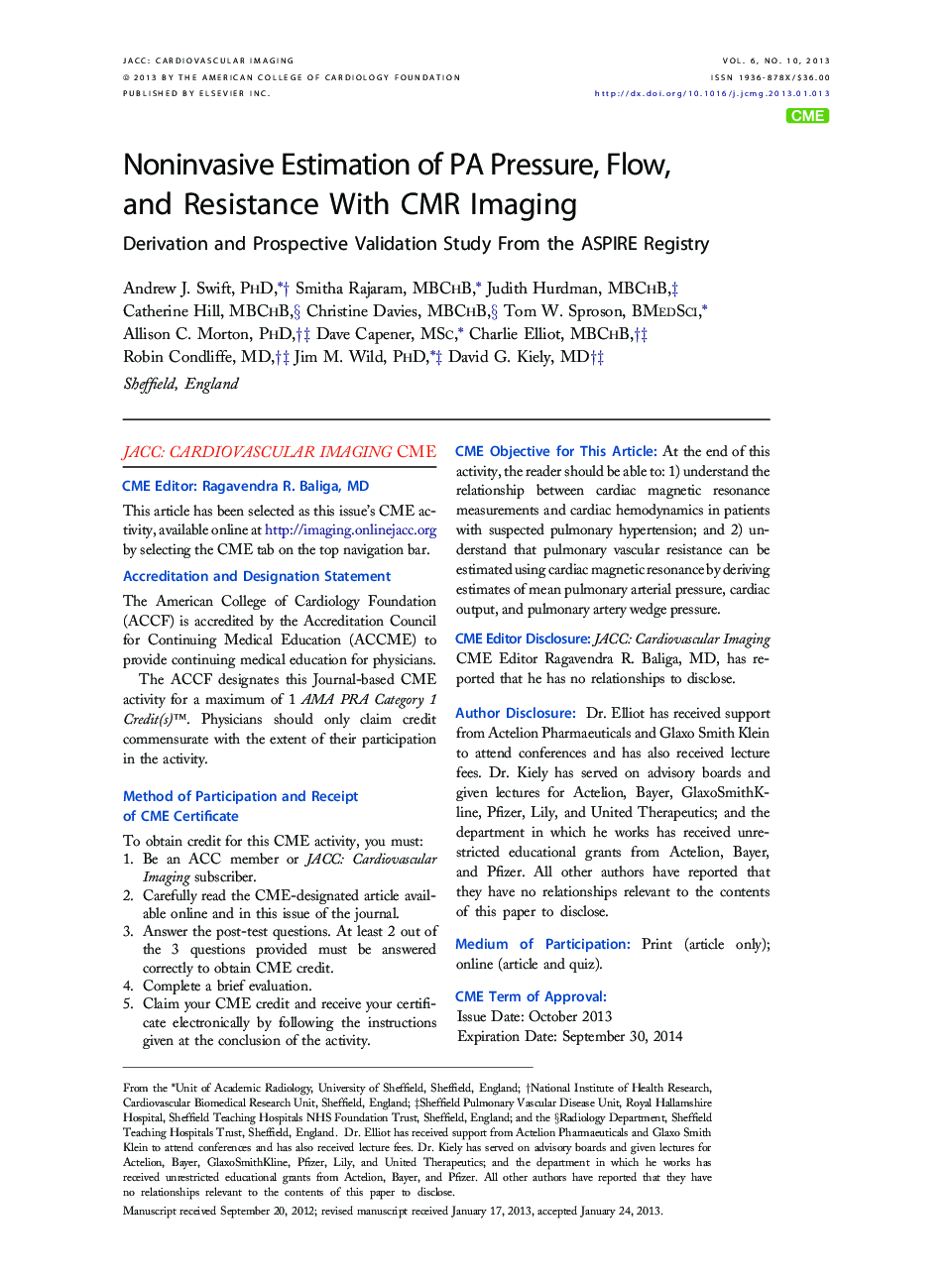| کد مقاله | کد نشریه | سال انتشار | مقاله انگلیسی | نسخه تمام متن |
|---|---|---|---|---|
| 5980400 | 1176922 | 2013 | 12 صفحه PDF | دانلود رایگان |

ObjectivesThe aim of this study was to develop a composite numerical model based on parameters from cardiac magnetic resonance (CMR) imaging for noninvasive estimation of the key hemodynamic measurements made at right heart catheterization (RHC).BackgroundDiagnosis and assessment of disease severity in patients with pulmonary hypertension is reliant on hemodynamic measurements at RHC. A robust noninvasive approach that can estimate key RHC measurements is desirable.MethodsA derivation cohort of 64 successive, unselected, treatment naive patients with suspected pulmonary hypertension from the ASPIRE (Assessing the Spectrum of Pulmonary Hypertension Identified at a Referral Centre) Registry, underwent RHC and CMR within 12 h. Predicted mean pulmonary arterial pressure (mPAP) was derived using multivariate regression analysis of CMR measurements. The model was tested in an independent prospective validation cohort of 64 patients with suspected pulmonary hypertension. Surrogate measures of pulmonary capillary wedge pressure (PCWP) and cardiac output (CO) were estimated by left atrial volumetry and pulmonary arterial phase contrast imaging, respectively. Noninvasive pulmonary vascular resistance (PVR) was calculated from the CMR-derived measurements, defined as: (CMR-predicted mPAP - CMR-predicted PCWP)/CMR phase contrast CO.ResultsThe following composite statistical model of mPAP was derived: CMR-predicted mPAP = -4.6 + (interventricular septal angle à 0.23) + (ventricular mass index à 16.3). In the validation cohort a strong correlation between mPAP and MR estimated mPAP was demonstrated (R2 = 0.67). For detection of the presence of pulmonary hypertension the area under the receiver-operating characteristic (ROC) curve was 0.96 (0.92 to 1.00; p < 0.0001). CMR-estimated PVR reliably identified invasive PVR â¥3 Wood units (WU) with a high degree of accuracy, the area under the ROC curve was 0.94 (0.88 to 0.99; p < 0.0001).ConclusionsCMR imaging can accurately estimate mean pulmonary artery pressure in patients with suspected pulmonary hypertension and calculate PVR by estimating all major pulmonary hemodynamic metrics measured at RHC.
Journal: JACC: Cardiovascular Imaging - Volume 6, Issue 10, October 2013, Pages 1036-1047